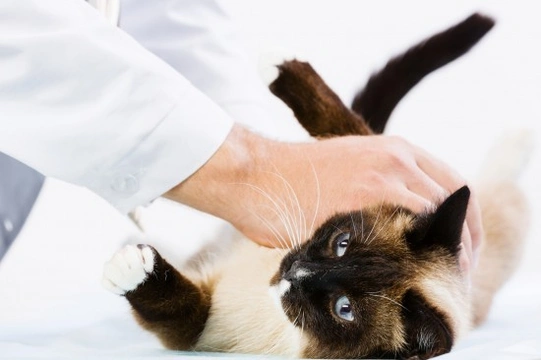
Cats and abscesses
Abscesses on the skin of the cat are a relatively common condition that may potentially develop on any cat from time to time. Cats that are prone to fighting and scrapping with other cats, or that like to catch rodents that might fight back are the most likely to develop an abscess, although any injury to the skin or embedded foreign body can potentially lead to abscess formation too.
Ingrown hairs, such as people sometimes develop due to shaving rashes are a miniature form of abscess, which occur when a growing hair gets trapped under the skin’s surface and cannot break through the surface of the skin in the normal manner. Anyone who has experienced one of these will be aware of how sore and painful they can be, and of course, the same is true of abscesses on your cat, although the cat is highly unlikely to suffer from ingrown hairs!
Read on to learn more about cats and abscesses.
What is an abscess?
In simple terms, an abscess is a build up of pus and toxins under the top layers of the skin, which cannot drain itself in the usual way due to the layer of skin lying above it. The main cause of abscesses in the cat is bacteria introduced into an open wound, triggering the body’s antibody release action and producing pus as part of the healing process. However, when that pus cannot drain from the abscess freely, a painful, inflamed lump will develop, containing the underlying pus.
How do cats develop abscesses?
When something pierces the skin of the cat, such as a thorn from the garden, a tooth or claw from another cat in a fight, or a small bite from a rodent or other prey that your cat is fighting, bacteria is often introduced into the open wound as well.
Cats have relatively fast-healing immune systems, and so the surface wound itself will generally knit together quickly, providing no access to the air for the affected area, which can lead to a sore inflammation and build up of pus due to the bacteria present. A few days later, the area surrounding the injury will swell and become apparent, and may be painful to the touch. By no means all injuries and sores will develop into abscesses, but it is important to know the symptoms and be on the lookout for their potential development.
Often, an abscess will simply involve localised soreness only, but an infected abscess can also lead to a release of bacteria and toxins into the cat’s bloodstream, which may lead to fever, lethargy and lack of appetite, and potentially make your cat quite ill.
Why do cats develop abscesses?
Any simple skin surface wound such as a scratch or a graze can potentially introduce bacteria into the broken skin and lead to an abscess, but puncture wounds and wounds that do not bleed much are the most likely to form an abscess, as the bacteria will be harboured deep within the wound and not be washed out properly.
Bites from fighting with other cats are the most common cause of cat abscesses, as not only does a bite produce a reasonably deep puncture wound, but also, introduces a heavy dose of bacteria from the bacteria-rich mouth and teeth into the wound too.
How to spot an abscess on your cat
Abscesses are not always immediately apparent on the cat, as they are often disguised under the fur and not obvious to the naked eye. Abscesses can be very painful to the cat, so check your cat over regularly and pay special attention to any areas that appear painful or provoke a negative reaction from your cat, and feel around for lumps, bumps, sore spots and areas that feel hotter than the surrounding skin.
Some of the symptoms of an abscess on the body of the cat may include:
- The obvious sign of a lump or sore on the skin that is inflamed or painful
- Any previous site of injury should be watched carefully for potential abscess formation
The signs of a fully developed abscess that you have not spotted can lead to:
- Depression
- Lethargy
- A fever
- Reduced activity levels
- Limping
- A hunched, uncomfortable posture
- Loss of appetite
- Negative response to the painful area being touched
Treatment for abscesses in the cat
There are various different ways that an abscess can be resolved. The abscess may find a drainage channel or access to the surface of the skin on its own, which will lead to a spontaneous drainage of the puss, which will often be thick, dark yellow or brown, and foul-smelling. Even if this occurs, you should still get your cat checked out by your vet to ensure that the abscess drains thoroughly and the wound is properly cleaned.
If the abscess doesn’t rupture on its own, you will need to take your cat along to the vet to have it drained, a procedure that involves puncturing the abscess (under anaesthetic) draining the puss, and removing any damaged skin tissue before thoroughly cleaning the wound and repairing the fissure.



